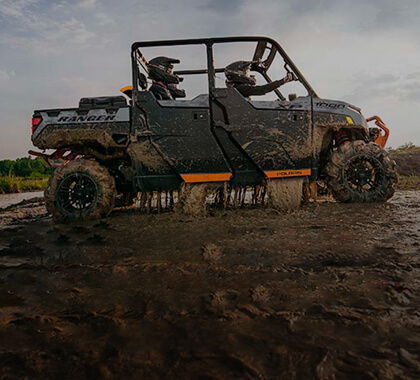What to Look Out for When Buying Polaris Ranger GPS Units?
Handheld GPS Units vs Mounted GPS Units
The first choice you need to make is to decide between a handheld Polaris Ranger GPS unit or a dashboard-mounted GPS unit.
If you are a hiker and you love both walking through nature and driving through nature, a handheld device is going to be a better choice for you.
Also, if you own multiple Ranger models, a handheld device might be a better idea as you can switch between different models easily.
On the other hand, if you want a more thorough, more precise, and usually more advanced GPS unit, a dashboard-mounted GPS unit is likely your choice.
These will keep your hands uncluttered while also equipped with more functionality than a standard handheld GPS unit.
Screen Quality
This is an area where most of the price gap is set because you can choose between more basic black and white non-touchscreen units with small screens or more thorough widescreen LCD or even LED Polaris Ranger GPS touchscreens.
You should focus your attention on the brightness as you want your screen to be easily readable in outdoor conditions while also focusing on buying a screen large enough so it can be seen, but isn’t dazzling or distracting while driving.
Special Features
Another area worthy of consideration is the special features list that comes with some more advanced Polaris Ranger GPS units.
You can get stuff such as live traffic updates, turn-by-turn directions, preloaded maps, tracking capabilities, and custom waypoints.
Some units can also connect to your phone and work in tandem with your phone which enables you to benefit from a wide variety of stuff such as areas of interest and similar.
Durability
Durability should also be at the top of your priorities list as you want a unit that can withstand all the stresses associated with off-roading driving.
This means going for waterproof and dustproof units equipped with rugged construction such as screen protectors or beefed-up corners.
Your wiring, mounts, and brackets should also be designed to withstand mud, rain, water, dirt, and debris.






